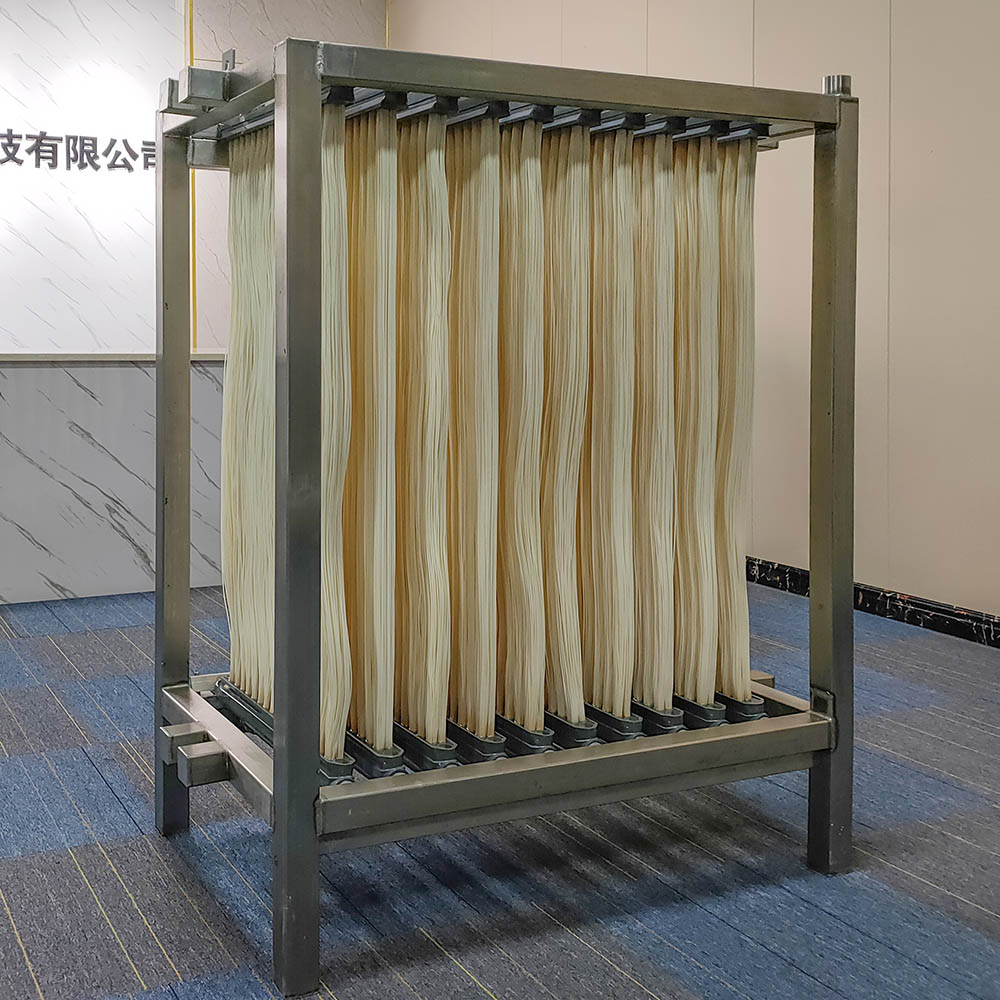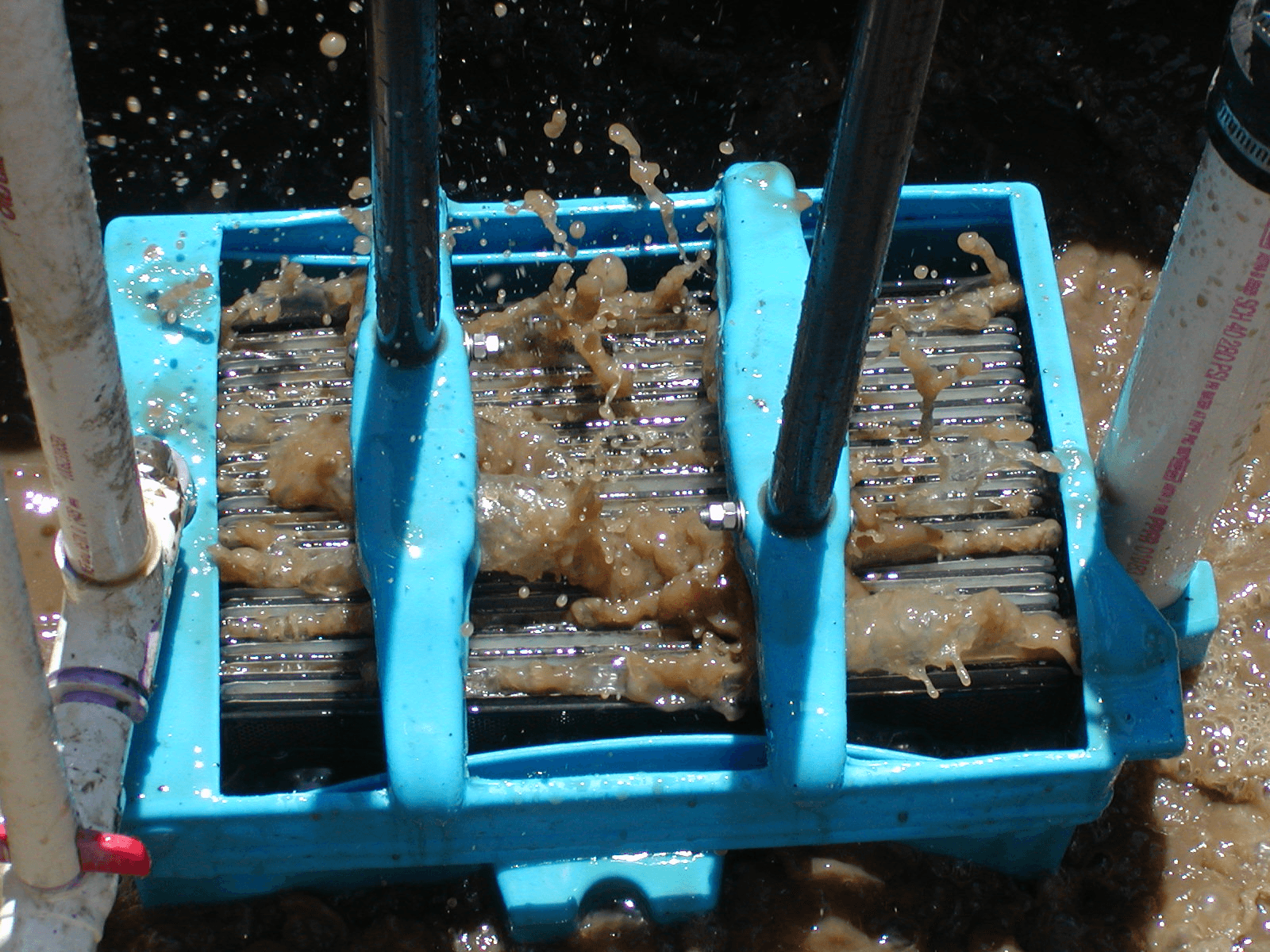Why Membrane Bioreactor is the Future of Wastewater Treatment in Industries
Wiki Article
The Advantages of Membrane Layer Bioreactors in Lasting Wastewater Management
Membrane layer bioreactors (MBRs) represent a crucial innovation in sustainable wastewater monitoring, successfully merging organic treatment with advanced membrane filtering technology. As the demand for sustainable options increases, exploring the multifaceted advantages of MBRs might expose unexpected implications for the future of wastewater therapy systems.Introduction of Membrane Bioreactors
Membrane layer bioreactors (MBRs) represent a substantial development in wastewater treatment innovation, integrating organic deterioration with membrane layer filtration to boost the efficiency of the therapy process. This ingenious system incorporates the advantages of traditional activated sludge processes with membrane technology, enabling enhanced solid-liquid separation. MBRs make use of semi-permeable membranes to separate cured water from biomass, leading to high-grade effluent that can be reused or safely discharged into the environment.The functional layout of MBRs typically involves a bioreactor where microbes damage down natural matter, followed by a membrane layer device that filters the combined liquor. This arrangement not only lessens the footprint of the therapy facility yet likewise enables greater biomass focus and decreased hydraulic retention times. MBRs are capable of dealing with a larger array of impurities, including nutrients and microorganisms, making them ideal for different applications, from municipal wastewater treatment to commercial effluent handling.
The assimilation of MBRs into wastewater administration systems is indicative of an expanding fad in the direction of effective and sustainable techniques in ecological design. Their ability to create top quality effluent while minimizing room demands positions MBR modern technology as a vital player in modern-day wastewater therapy services.
Enhanced Effluent Top Quality

The membrane layer filtering procedure functions as a physical obstacle, enabling the retention of microbes and particle issue, which contributes to a more clear and cleaner effluent (Membrane Bioreactor). Moreover, MBRs run at higher biomass focus than standard turned on sludge systems, promoting extra efficient biodegradation of contaminants. This causes a reduction in biochemical oxygen need (BODY) and complete put on hold solids (TSS) degrees in the final effluent
Furthermore, MBRs show superb efficiency in dealing with tough wastewater structures, such as commercial effluents and wastewater with high nutrient loads. Because of this, the effluent created is often of better, permitting even more flexible disposal choices and reduced ecological influence. Inevitably, the improved effluent quality accomplished with MBR technology emphasizes its essential role in advancing sustainable wastewater management techniques.
Water Reuse Opportunities
The high-quality effluent generated by membrane layer bioreactors (MBRs) opens up substantial opportunities for water reuse in various applications. MBRs efficiently eliminate impurities, consisting of microorganisms, put on hold solids, and organic matter, leading to cured water that satisfies or goes beyond governing criteria for reuse. This high quality enables the implementation of water reusing initiatives across diverse sectors.One famous application is in farming, where dealt with wastewater can be made use of for watering, promoting sustainable farming methods while preserving freshwater resources. Furthermore, MBR-treated effluent can be utilized for commercial processes such as air conditioning, cleaning, and as a process water resource, significantly reducing the demand for potable water in these procedures.
In metropolitan atmospheres, MBRs help with using reclaimed water for landscape irrigation, commode flushing, and other non-potable uses, adding to the overall strength of water system systems. The integration of MBR innovation in decentralized systems aids in taking care this page of local water demands, particularly in water-scarce regions.
Lowered Environmental Impact
Just how can the adoption of membrane layer bioreactors (MBRs) add to a lowered ecological impact in wastewater management? MBRs dramatically improve the treatment effectiveness of wastewater while lessening environmental disturbances. By incorporating biological therapy processes with membrane filtration, MBRs effectively get rid of a large range of toxins, including organic matter, nutrients, and virus. This advanced purification leads to higher-quality effluent, which is vital for securing marine ecological communities and reducing the problem on natural water bodies.Moreover, MBRs operate at lower hydraulic retention times contrasted to standard systems, leading to smaller treatment plant impacts. This compact style reduces land usage, thus maintaining natural habitats and biodiversity. The process likewise creates much less sludge than standard methods, mitigating disposal obstacles and reducing greenhouse gas emissions connected with sludge administration.
In addition, MBRs assist in the recovery of valuable sources, such as water and nutrients, contributing published here to a circular economic situation. By making it possible for water reuse for irrigation or commercial procedures, MBRs help alleviate freshwater shortage, therefore advertising sustainable water utilize methods. Inevitably, the adoption of MBR technology represents a considerable stride in the direction of decreasing the environmental impact of wastewater monitoring systems.
Economic Advantages of MBRs

Additionally, MBRs promote the manufacturing of high-grade effluent, which can be recycled for various applications, such as farming irrigation and industrial procedures - Membrane Bioreactor. This reuse ability can substantially decrease water purchase costs, supplying a financial reward for markets encountering rigid water guidelines
The small design of MBR systems also leads to lowered land demands, which is especially beneficial in metropolitan areas where realty is expensive. By reducing room, districts and markets can conserve on land acquisition and upkeep costs.
Moreover, MBRs commonly call for much less constant upkeep and have a longer lifespan than traditional systems, even more adding to cost financial savings. In summary, the financial benefits of MBRs-- ranging from lowered operational costs to land cost savings and effluent reuse-- make them an engaging selection for lasting wastewater administration, using both long-term and immediate financial advantages.
Final Thought
Membrane bioreactors stand for a transformative technique to lasting wastewater administration, integrating organic treatment with innovative membrane layer filtering for remarkable effluent quality. Their ability for reliable contaminant removal facilitates water reuse, consequently preserving vital freshwater resources. Furthermore, MBRs add to reduced ecological effects with portable layouts and reduced sludge generation. Economic benefits even more improve their stability, making MBRs an appealing remedy for attending to the obstacles of wastewater therapy and promoting sustainable resource administration.
Membrane layer bioreactors (MBRs) represent a critical development in lasting wastewater monitoring, properly combining biological treatment with sophisticated membrane filtering innovation.Membrane bioreactors (MBRs) stand for a considerable improvement in wastewater treatment innovation, integrating biological destruction with membrane layer filtering to enhance the effectiveness of the treatment procedure.Attaining improved effluent quality is one of the most substantial advantages of making use of membrane layer bioreactors (MBRs) in wastewater treatment.In addition, MBRs demonstrate excellent efficiency in dealing with tough wastewater compositions, such as commercial effluents and wastewater with high nutrient lots.Incorporating membrane bioreactors (MBRs) right into wastewater management not only reduces ecological effect yet see this site additionally provides considerable economic advantages.
Report this wiki page